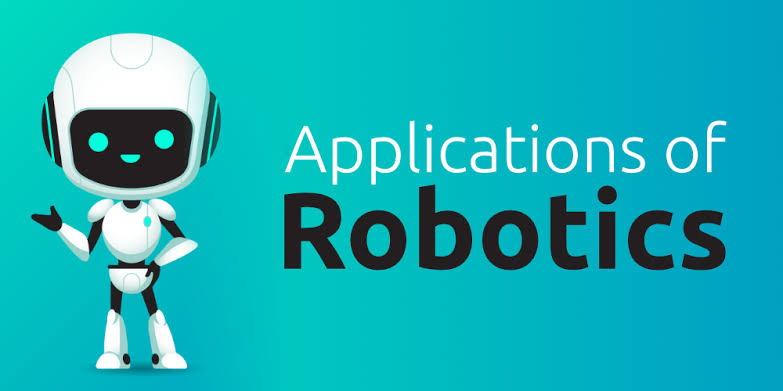The fusion of AI and robotics in 2025 is rewriting the rules of automation, enabling machines to learn, adapt, and interact like never before. Whether it's enhancing medical precision, delivering packages, or navigating chaotic streets, AI is making robots smarter and more useful across every sector.
Artificial Intelligence and robotics have long shared a deeply intertwined path, but in 2025, their fusion is more powerful and impactful than ever. From autonomous machines to intelligent assistants, AI is transforming what robots can do—making them more adaptive, perceptive, and collaborative. Robotics is no longer limited to industrial arms in assembly lines; today’s AI-driven machines are capable of learning from environments, making decisions in real time, and safely interacting with humans.
Here are ten of the most groundbreaking AI applications revolutionizing the robotics landscape in industries ranging from healthcare to logistics.
10. Autonomous Navigation and Path Planning
One of the foundational applications of AI in robotics is autonomous navigation. Robots must understand their surroundings, detect obstacles, and make intelligent decisions to move safely and efficiently.
Using technologies such as Simultaneous Localization and Mapping (SLAM), computer vision, and deep reinforcement learning, AI allows robots to plan optimal routes in real time. This is especially crucial in self-driving vehicles, warehouse robots like those from Boston Dynamics, and last-mile delivery bots like Amazon Scout.
9. Robotic Vision and Perception
AI-driven vision systems give robots the ability to interpret their environment through visual data. Through convolutional neural networks (CNNs) and generative models, robots can now identify objects, interpret gestures, recognize faces, and even read text.
These capabilities are transforming everything from quality control in manufacturing to precision harvesting in agriculture. Companies like Covariant and Neurala are leading this space, enabling machines to adapt visually to complex and dynamic scenarios without human intervention.
8. Human-Robot Interaction (HRI)
Making robots more intuitive and accessible requires more natural ways to interact with them. AI plays a critical role in enabling robots to understand and respond to speech, facial expressions, emotions, and gestures.
Natural language processing and emotion recognition allow service robots to assist customers in retail or hospitality settings, while collaborative robots, or cobots, adjust their behavior based on human presence and proximity. SoftBank’s Pepper and newer models like Moxie are pushing the limits of empathetic, socially intelligent machines.
7. Predictive Maintenance and Self-Healing Systems
In industrial and manufacturing contexts, downtime can be extremely costly. AI is enabling robots to detect mechanical issues before they lead to failure. Using machine learning algorithms, robots can monitor their own performance and predict when components are likely to fail.
This self-diagnostic capability reduces downtime, lowers maintenance costs, and increases reliability. Siemens and GE are integrating these features into robotic assembly and production lines, while autonomous vehicles also benefit from this intelligence for self-checks and alerts.
6. Adaptive Grasping and Manipulation
One of the greatest challenges in robotics is replicating the human hand’s dexterity. AI is changing this by enabling robots to learn how to grip and manipulate objects of various shapes, sizes, and fragility without pre-programmed instructions.
Machine learning models are used to train robotic arms to understand the physics of objects through trial and error, video inputs, or simulation. Companies like RightHand Robotics and OpenAI’s robotics division are pioneers in teaching robots to grasp irregular items—crucial for e-commerce fulfillment, food handling, and domestic tasks.
5. Swarm Intelligence
Swarm robotics is inspired by nature—particularly the collective behavior of ants, bees, and birds. AI enables fleets of small robots to collaborate on tasks like search and rescue, surveillance, or even space exploration without centralized control.
These systems use reinforcement learning and decentralized algorithms to communicate, coordinate, and adapt in real time. In 2025, NASA, the European Space Agency, and DARPA are exploring swarm robotics for missions in hazardous or remote environments, both on Earth and beyond.
4. AI for Surgical and Healthcare Robots
In healthcare, AI-enhanced robots are making surgical procedures more precise and less invasive. Robotic arms guided by computer vision and machine learning can perform microsurgeries with sub-millimeter accuracy.
Beyond surgery, AI is also being used in rehabilitation robots, elder care companions, and diagnostics systems. Robots like Da Vinci Surgical System and the newer AI-integrated units by Medtronic use real-time data to make fine-tuned decisions, significantly improving patient outcomes and reducing recovery time.
3. Natural Language Understanding in Service Robots
Service robots are increasingly deployed in customer-facing roles—from reception desks to airports. For these robots to be truly effective, they must understand and process language in a human-like way.
Advanced AI models trained in natural language understanding allow robots to answer questions, follow commands, and even hold conversations. With the rise of foundation models and real-time language translation, robots like Temi and concierge bots in Japanese hotels are breaking language barriers while improving service quality.
2. Reinforcement Learning for Real-Time Decision Making
Reinforcement learning, a branch of AI where robots learn by trial and error through rewards, is transforming real-time robotics decision-making. Rather than following fixed programming, robots can now respond to unpredictable environments by learning optimal behavior over time.
This has huge applications in autonomous drones, robotic arms in dynamic environments, and robotic assistants. Reinforcement learning is particularly useful in training robots in simulations, speeding up development without risking physical damage.
1. Edge AI for Real-Time Robotic Control
The most revolutionary application of AI in robotics today is Edge AI—bringing the power of artificial intelligence directly to the robot itself, without relying on cloud connectivity. With on-device machine learning chips, robots can make instant decisions, process video feeds, and adapt to environmental changes in milliseconds.
This advancement is critical for safety and performance in high-stakes environments like autonomous driving, battlefield robotics, and factory floor automation. NVIDIA’s Jetson platform and Qualcomm’s robotics processors are leading the way, enabling smarter, faster, and more independent machines.
